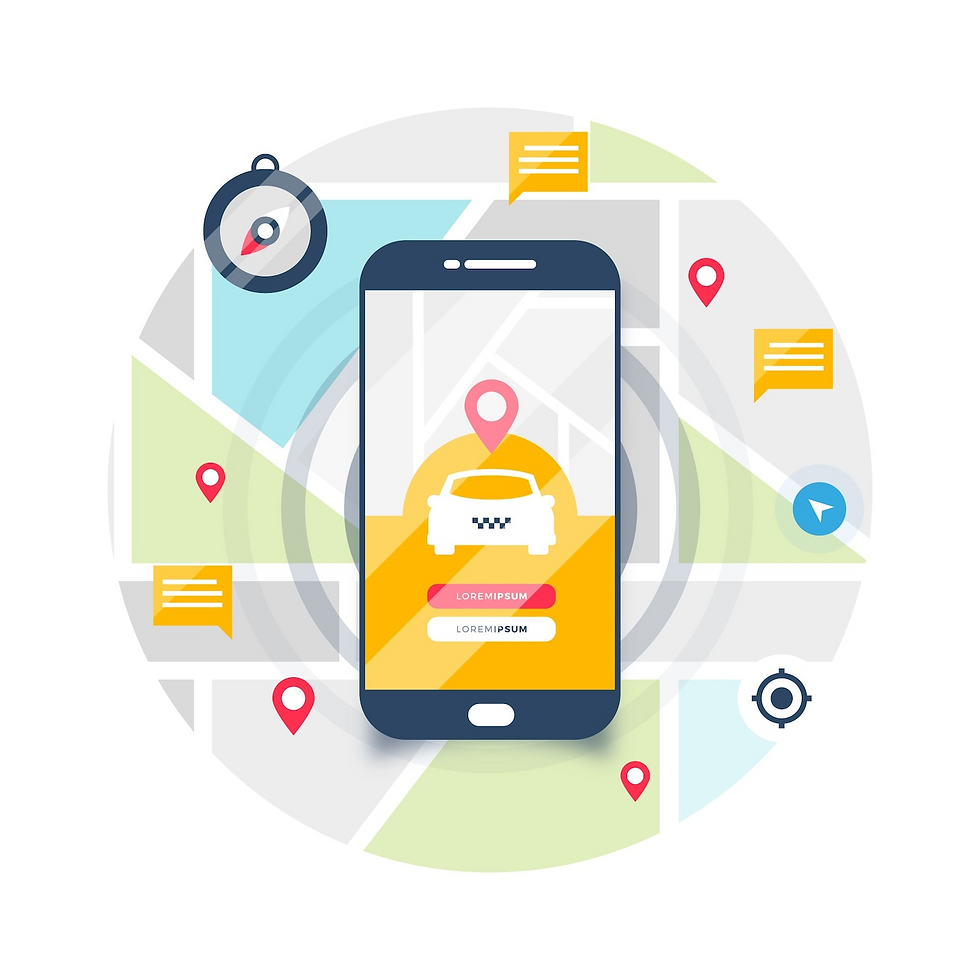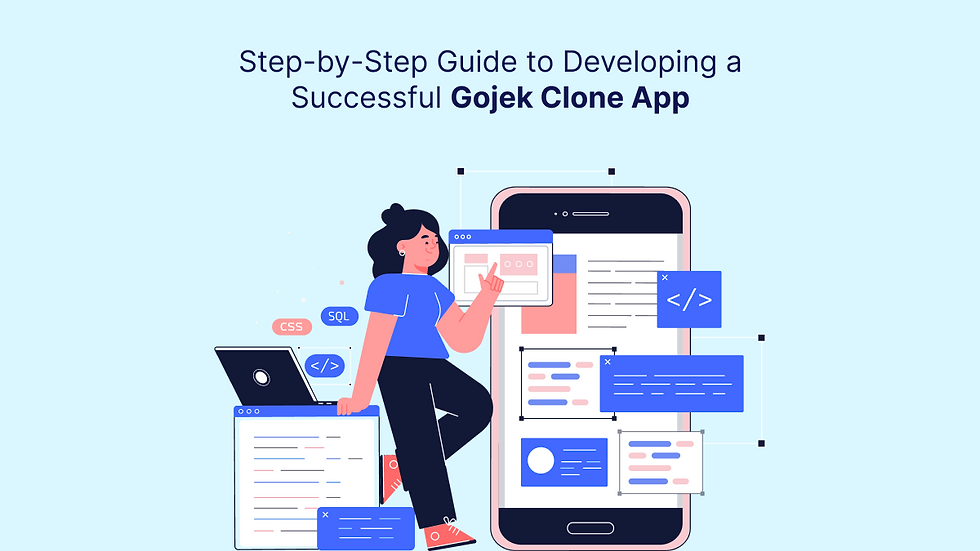What Makes the Waze Business Model Successful?
- Harry Clark

- Sep 5
- 5 min read

In the world of navigation apps, Waze has managed to stand out by creating a unique and highly effective business model. Unlike traditional GPS tools, Waze combines technology with community-driven features, making it more interactive and useful for drivers. Millions of people use Waze every day, and its success shows how innovation and user engagement can completely change an industry. But what exactly makes the Waze business model so successful? Let’s explore the reasons behind its growth, the features that set it apart, and the strategies that keep it relevant in a competitive market.
The Rise of Waze
Waze started as a small startup in Israel in 2006. At that time, most navigation apps were simple, showing basic routes and traffic conditions. Waze introduced a new idea: combining real-time traffic updates with user contributions. Drivers could report accidents, road closures, speed traps, and traffic jams, helping other drivers avoid delays.
This crowdsourced approach quickly made Waze popular, and in 2013, Google bought it for more than $1 billion. Today, Waze is one of the most widely used navigation apps in the world, trusted by millions of drivers.
Why Waze Stands Out
Real-time traffic updates based on user reports
Community-driven platform where drivers help each other
Fun, interactive design with features like voice packs
Smart routing that saves time and reduces stress
Key Features of the Waze Business Model
The success of Waze can be traced back to its strong features and how they align with user needs.
Crowdsourced Data
The most important feature of Waze is its use of crowdsourced information. Every driver using the app contributes data, either automatically through GPS tracking or manually by reporting incidents. This makes Waze more accurate than many other apps because it updates traffic conditions in real time.
Gamification and User Engagement
Waze keeps users engaged by making the app fun to use. Drivers can earn points, change their avatars, and use creative voice directions. These small touches encourage people to stay active on the app, which improves the overall experience for everyone.
Smart Navigation
Waze’s algorithms are designed to find the fastest routes using real-time data. Instead of just relying on maps, it constantly adjusts routes based on traffic reports, helping drivers save time.
Partnerships and Advertising
Waze earns revenue through ads and partnerships. Businesses can advertise their locations on the app, so when drivers pass by, they see nearby stores, restaurants, or gas stations. These ads are non-intrusive and often helpful, making them effective for both drivers and businesses.
Why the Waze Business Model Works
There are several reasons why Waze has been so successful compared to other navigation apps.
Community-Driven Approach
Waze relies on its users to provide accurate, real-time updates. This creates a strong sense of community where drivers feel they are helping each other. The more people use it, the better it becomes, creating a cycle of growth.
Solving Real Problems
Traffic congestion is a daily challenge for millions of people. Waze directly solves this issue by offering time-saving routes, alerting users to hazards, and reducing frustration. By addressing a real and common problem, it ensures consistent demand.
Monetization Without Sacrificing User Experience
Many apps struggle to balance monetization with user experience. Waze does this well by offering ads that are location-based and relevant. For example, a driver looking for gas might see a nearby station with discounted prices. This adds value rather than distracting from the driving experience.
Scalability
Because Waze depends on user data, it scales easily. As more people use the app, its accuracy and value increase. This network effect has been key to its growth.
Revenue Streams of Waze
Waze makes money through multiple channels that align well with its services.
Location-Based Advertising
Local businesses pay to appear on the map when drivers are nearby. These ads are context-driven, making them more effective than traditional ads.
Partnerships with Companies
Waze has partnered with car manufacturers, media outlets, and even government agencies to share traffic data and improve transportation planning.
Sponsored Search Results
When drivers search for locations, sponsored businesses appear at the top, giving them visibility.
Data Licensing
Waze’s valuable traffic data can be licensed to other companies, providing another source of revenue.
Lessons from the Waze Business Model
Entrepreneurs and businesses can learn several lessons from Waze’s approach.
Leverage User Contributions
By turning users into contributors, Waze created a self-sustaining platform. This model can be applied to other industries where community involvement can add value.
Focus on Real-Time Value
Waze’s success lies in providing immediate, real-time benefits. Apps that solve problems quickly and efficiently are more likely to succeed.
Balance Monetization and Experience
Revenue should not compromise user experience. Waze shows that well-placed, relevant ads can enhance value instead of being disruptive.
Use Gamification to Boost Engagement
Small touches like avatars, points, and fun voice directions make users more engaged and loyal. Adding similar features can help other apps build stronger user connections.
Challenges Faced by Waze
Even with its success, Waze faces challenges that it must manage carefully.
Competition from Other Navigation Apps
Google Maps, Apple Maps, and other apps continue to compete with Waze. To stay ahead, Waze must keep innovating.
Safety Concerns
Since Waze encourages reporting while driving, there are concerns about distracted driving. Waze has worked to make reporting safer by using voice commands.
Data Privacy
With so much user data being collected, privacy and security are important concerns. Waze must maintain user trust by handling data responsibly.
The Future of Waze
Waze is likely to continue growing as cars become more connected and smart cities evolve. Partnerships with car manufacturers and integration with self-driving technology could shape its future. The focus will remain on real-time, community-driven solutions that make driving easier and safer.
Conclusion
The success of Waze lies in its unique business model that combines technology, community engagement, and smart monetization. By solving real problems like traffic congestion and offering a fun, interactive experience, Waze has built a loyal user base and steady revenue streams. Its focus on crowdsourced data, real-time value, and user engagement makes it a great example of how digital platforms can succeed in competitive markets. For entrepreneurs, the Waze model offers lessons on building scalable, community-driven businesses while keeping users at the center. Taking inspiration from such innovative approaches can also help in building strong digital solutions, much like the way a gojek clone app empowers entrepreneurs to launch successful multi-service platforms.

FAQs
What is unique about the Waze business model?
The unique factor is its crowdsourced data system where users provide real-time traffic updates, making navigation more accurate and interactive.
How does Waze make money?
Waze earns revenue through location-based ads, sponsored search results, business partnerships, and data licensing.
Why is Waze so popular among drivers?
It gives real-time updates about traffic, accidents, road closures, and even police alerts, helping drivers save time and avoid delays.
What challenges does Waze face?
Competition, data privacy concerns, and safety issues related to distracted driving are some of its main challenges.
What can entrepreneurs learn from Waze?
Entrepreneurs can learn the importance of community engagement, real-time value, gamification, and balancing monetization with user experience.




Comments